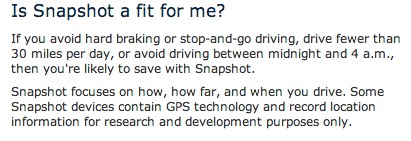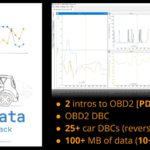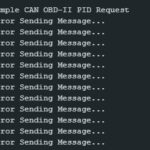For drivers exploring ways to lower their car insurance premiums, programs utilizing On-Board Diagnostics Type 2 (OBD2) devices have emerged as a seemingly attractive option. Insurers dangle the promise of discounts in exchange for monitoring driving habits via these plug-in gadgets. However, beneath the surface of potential savings lies a complex web of concerns that makes many drivers hesitant to embrace OBD2 monitoring for insurance purposes. Why are drivers resistant to plugging these devices into their vehicles? Let’s delve into the key reasons behind this growing apprehension.
Understanding OBD2 Devices and Insurance Programs: How It Works
To understand the reluctance, it’s crucial to first grasp how these OBD2 insurance programs operate. The OBD2 port in your car is a standardized interface primarily designed for vehicle diagnostics and repair. It grants access to a wealth of real-time data from your car’s various systems, including the engine, transmission, brakes, and more. Insurance companies, like Progressive with their Snapshot program, leverage this port by offering devices that plug directly into it.
These devices are not merely passive data loggers. They are sophisticated pieces of technology, often equipped with memory, cellular radios, and GPS capabilities. As you drive, the OBD2 device continuously streams data about your vehicle’s operation to the insurance provider. While companies like Progressive publicly state they track metrics such as vehicle speed and braking patterns, the OBD2 system is capable of monitoring a far wider range of data points. This includes engine RPM, throttle position, and numerous other parameters vehicle technicians utilize for comprehensive diagnostics.
The Privacy Paradox: Data Collection and Your Driving Habits Under Scrutiny
The most significant concern for drivers regarding OBD2 insurance devices is undoubtedly privacy. The idea of your insurance company constantly monitoring your driving habits can feel intrusive and unsettling. While the allure of discounts is tempting, many drivers are questioning the trade-off between potential savings and the surrender of their personal driving data.
The information collected extends beyond just hard braking and nighttime driving, as marketing materials might suggest. Through the OBD2 port, insurers could potentially access data on your vehicle’s overall condition, engine performance, and even driving routes, depending on the device’s capabilities and the program’s terms. Even if location data is officially disclaimed, the technical capability for GPS tracking is often present in these devices, raising concerns about future policy changes or data usage.
“Big Brother” Concerns and Potential Misuse of Data: Control and Transparency
This constant monitoring fuels “Big Brother” anxieties. Drivers worry about the potential for data misuse, even if unintended. What safeguards are in place to protect this highly personal driving data? Concerns arise about data breaches, unauthorized access, and how long this data is stored and used.
Furthermore, the lack of transparency surrounding data usage algorithms is a major point of contention. Insurance companies often provide vague summaries of tracked metrics, leaving drivers in the dark about the precise formulas that determine their discounts or potential penalties. This lack of clarity makes it difficult for drivers to understand how their driving is being evaluated and to trust the fairness of the system. The terms and conditions, often buried in fine print and not readily available to non-customers, add to this sense of opaqueness.
Beyond Privacy: Practical Drawbacks and Questionable Benefits of OBD2 Monitoring
Beyond privacy, several practical drawbacks contribute to driver reluctance towards OBD2 insurance monitoring:
Inaccurate Penalties and “Hard Braking” Misconceptions
Programs like Progressive Snapshot often penalize “hard braking,” defined as deceleration exceeding a fixed threshold, such as 7 mph per second. This linear rule fails to account for real-world driving conditions. Urban environments, with their stop-and-go traffic, inevitably lead to frequent hard braking events, regardless of safe driving practices. Moreover, situations like driving on icy or unpaved roads can trigger false positives. Tire spin, followed by rapid deceleration upon regaining traction, can be misinterpreted as hard braking by the device, even without the driver aggressively applying the brakes.
Gaming the System and Unnatural Driving Habits
The desire to maximize discounts can lead drivers to consciously alter their driving habits in unnatural and potentially less safe ways. Focusing intently on avoiding “hard brakes” by decelerating extremely gradually or taking longer routes to accumulate “good mileage” can distract drivers from the primary task of safe and attentive driving. The system inadvertently encourages drivers to “game” the metrics rather than genuinely improve their driving safety.
Questionable Savings and Potential Premium Increases
The promise of significant savings is a primary motivator for enrolling in OBD2 monitoring programs. However, as demonstrated by personal experiences, the actual financial benefit can be minimal or even non-existent. Base premiums can quietly increase upon policy renewal, effectively negating any discounts earned through “good driving” as tracked by the device. In some cases, the “discount” becomes a mere vanity metric, masking an overall increase in insurance costs. The perceived savings can be an illusion, leaving drivers feeling misled about the true financial implications of the program.
The Insurer’s Perspective: Risk Assessment and Behavior Modification
From the insurance company’s perspective, OBD2 devices offer valuable tools for risk assessment and behavior modification. Access to real-time driving data allows insurers to more accurately gauge individual driver risk, potentially leading to more personalized premiums in the future. The programs also serve as a mechanism to encourage safer driving habits. The immediate feedback, such as the “beep” for hard braking, acts as a Pavlovian stimulus, prompting drivers to adjust their behavior.
However, this perspective often clashes with driver concerns about fairness, privacy, and the actual benefits of these programs. While insurers emphasize safety improvements and potential discounts, drivers are increasingly questioning whether the trade-offs are truly worthwhile.
Are OBD2 Insurance Devices Worth It? Making an Informed Decision
Ultimately, the decision of whether or not to use an OBD2 device for car insurance is a personal one. Drivers must carefully weigh the potential benefits against the inherent drawbacks. While discounts may be appealing, the concerns surrounding privacy, data security, inaccurate penalties, and questionable savings are significant.
Before enrolling in such a program, drivers should:
- Thoroughly research the terms and conditions: Understand exactly what data is collected, how it is used, and the potential implications for your premiums and claims.
- Consider your driving habits and environment: Evaluate whether your typical driving patterns are likely to be unfairly penalized by the program’s metrics.
- Evaluate the potential savings realistically: Don’t assume substantial discounts. Compare potential savings to the value you place on your privacy and data security.
- Ask critical questions: Seek clarity from your insurer about data protection measures, algorithm transparency, and the long-term impact on your insurance costs.
In conclusion, the reluctance of many drivers to embrace OBD2 insurance monitoring stems from valid concerns about privacy, data control, and the often-unclear benefits. As technology advances and data collection becomes increasingly prevalent, drivers are rightfully demanding greater transparency and control over their personal information, even in exchange for potential financial incentives.


